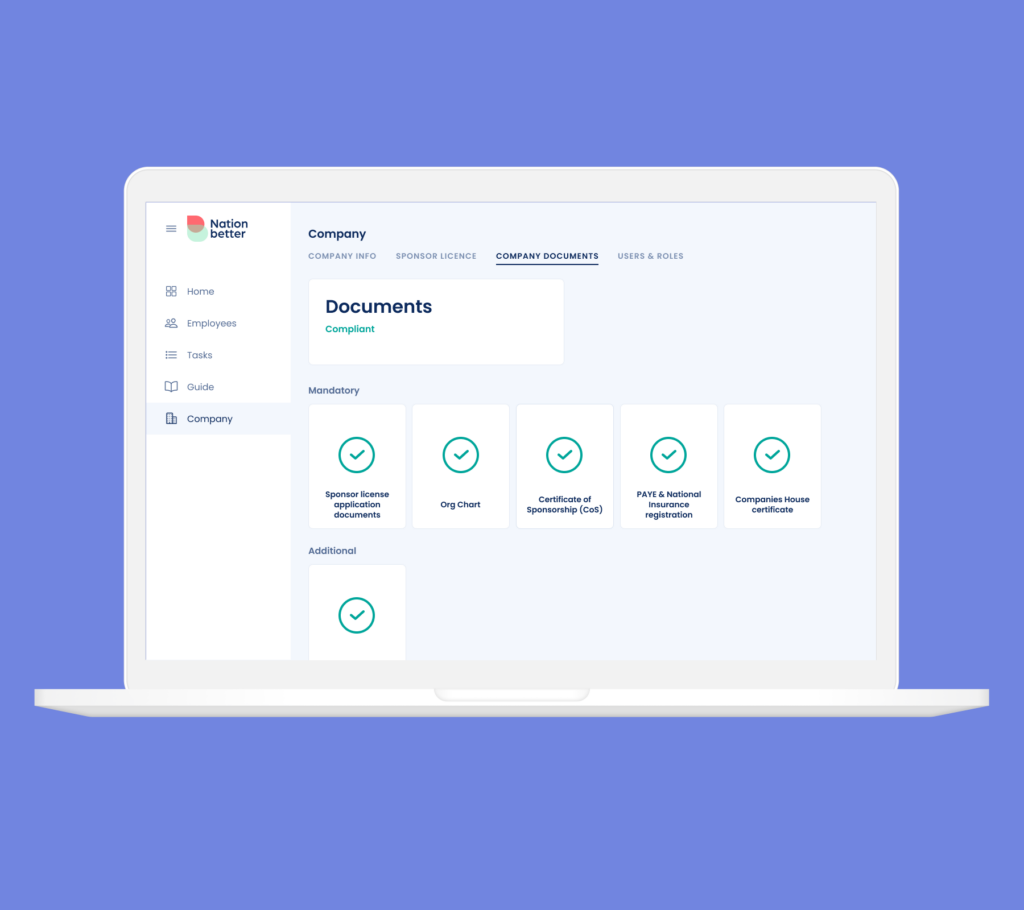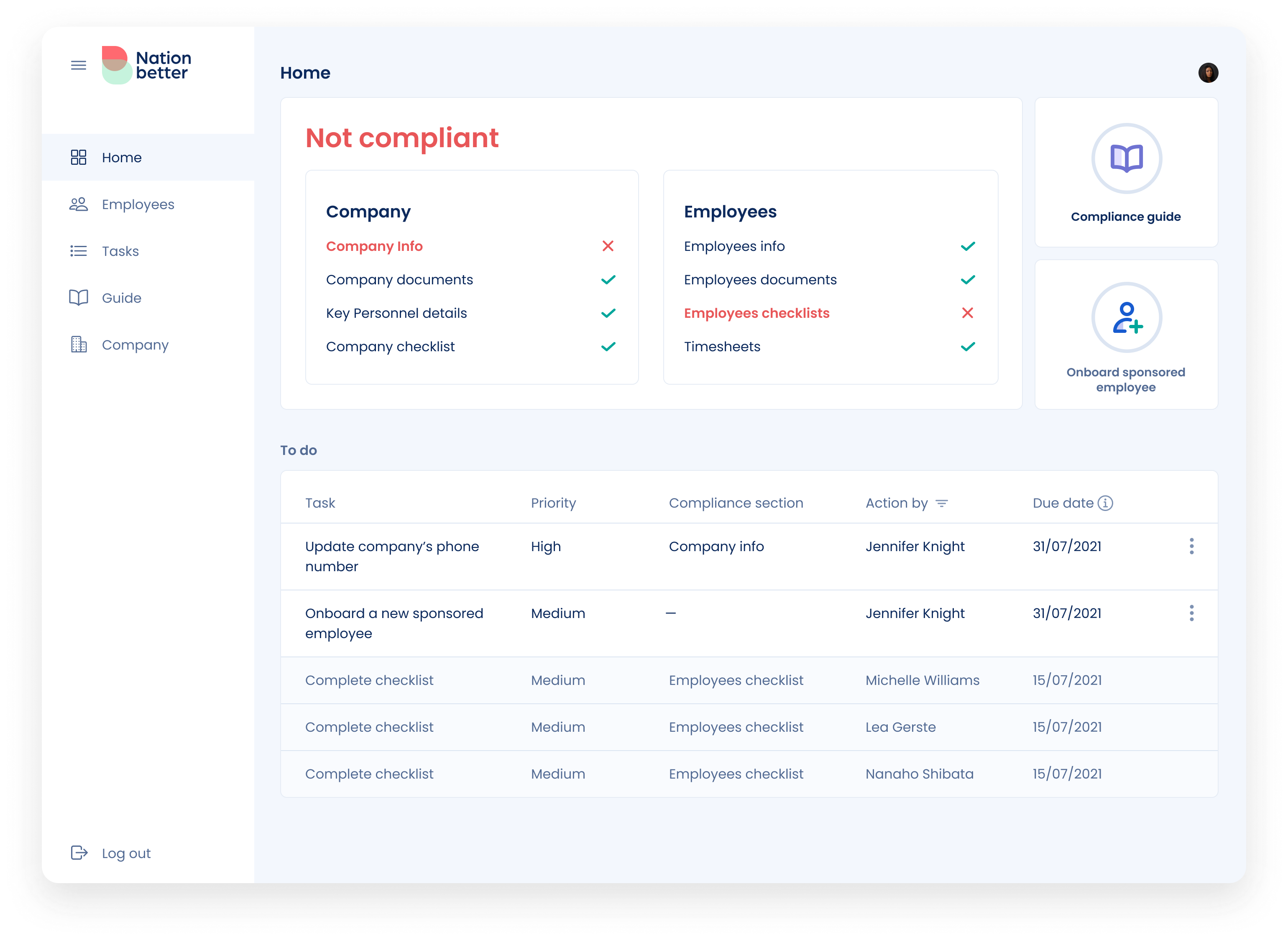Everything you need to consider before sponsoring employees through the Skilled Worker route

Everything you need to consider before sponsoring employees through the Skilled Worker route
Sponsoring skilled workers is a great way for businesses in the UK to improve diversity in their workforce, nurture creativity and innovation, and fill core skill gaps caused by the shortage of skilled workers in the UK labour market.
That said, sponsoring talent can be a complex and time-consuming process due to the various Home Office guidelines and requirements that you need to comply with.
For starters, if you’re looking to become a sponsor in the UK, there are several visa routes you can explore, including the Temporary Worker route, Skilled Worker route, Minister of Religion route, International Sportsperson route, and Senior or Specialist visa route—you must choose the right route based on your recruitment needs.
The Skilled Worker route is one of the most popular sponsorship pathways among employers looking to sponsor employees on a permanent basis, and came into effect on December 1 2020, replacing the old Tier 2 visa route.
Introducing the Skilled Worker visa route has also brought with it a number of changes to the sponsorship process that an employer interested in sponsoring employees through this route must know.
Who can sponsor employees through the Skilled Worker route?
First and foremost, you should hold a valid sponsorship licence to become eligible to sponsor skilled workers in the UK.
You can apply for a sponsorship licence if your business meets the following eligibility and suitability criteria:
- Your business has a legal presence in the UK
- You have not had a sponsor licence revoked in the last 12 months
- You can prove that you have a genuine vacancy that is eligible for sponsorship
- You can prove that you have appropriate processes in place to manage your sponsorship activities
- You have no unspent criminal convictions for immigration offences or crimes such as fraud or money laundering
If you meet these eligibility and suitability criteria, you can apply online for your licence and pay the corresponding sponsorship fee.
You should also know that when you’re applying for a sponsorship licence, you should appoint 3 key personnel—an authorising officer, a key contact, and a level 1 user—to manage your sponsorship activities.
What job roles are eligible for the Skilled Worker route?
- The job role you’re hiring for is in a shortage occupation
- You’re offering a postdoctoral position in science or higher education
- The candidate you’re sponsoring is under 26, studying or a recent graduate, or is in professional training
- The candidate has a science, technology, engineering or maths (STEM) PhD-level qualification that’s relevant to their job (if your sponsored employee has a relevant PhD-level qualification in any other subject, you must pay at least £23,040)
What other factors should you be aware of when sponsoring skilled workers?
Once you’ve secured a sponsorship licence and have become a sponsor, you must ensure that you perform due diligence to your sponsorship duties, which include:
- Complying with Home Office immigration laws
- Maintaining documentation relating to your sponsorship activities
- Not engaging in any activities that are not conducive to the public good
- Reporting relevant changes to the nature of employment of your sponsored employees or your business to the Home Office
- Ensuring that your sponsored employees have the right to work in the UK and have the necessary skills and qualifications to work in the job (you can do this by conducting a right to work check)
Streamline the skilled worker sponsorship process with expert support
Leveraging the talent of sponsored employees can elevate your business to the next level and help you gain an edge over your competitors. But, the process of sponsoring skilled workers can be stressful for you and your applicants.
At Nation.better, our team of immigration experts make this process streamlined and stress-free through our end-to-end sponsorship management solution, including sponsor licence support, visa application support, and a sponsorship compliance platform.
If you’d like to learn more about how we can help you, don’t hesitate to contact our team.

Related articles

Blog post heading
Sed ut perspiciatis unde omnis iste natus error sit voluptatem accusantium dolor...

Blog post heading
Sed ut perspiciatis unde omnis iste natus error sit voluptatem accusantium dolor...

Blog post heading
Sed ut perspiciatis unde omnis iste natus error sit voluptatem accusantium dolor...
